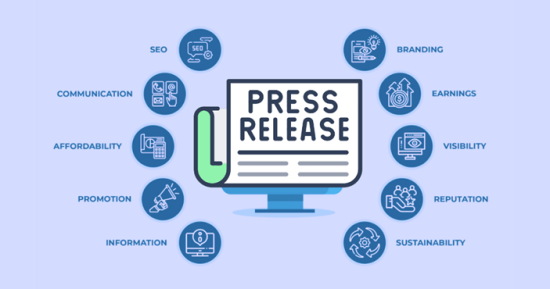
How do you capture a reader’s attention from the very first line? How do you create an opening that hooks them and compels them to keep reading? Starting a story is no easy task, but it is the key to captivating your audience and setting the stage for an unforgettable narrative.
In this ultimate guide, we will provide you with invaluable insights on how to start a story and techniques to help you master the art of starting a story. Whether you’re a seasoned writer looking to polish your openings or a beginner in need of guidance, this comprehensive guide is here to help.
Have you ever wondered about the secrets behind famous opening lines? How renowned authors instantly hook their readers? In this guide, we will analyze famous opening lines from classic and contemporary literature, giving you inspiration and guidance as you embark on your own storytelling journey.
To truly engage your readers, you must understand the significance of your story’s opening. We will explore the role of the opening in capturing the reader’s attention and establishing the narrative tone. You will discover the different types of story hooks that captivate an audience, how to create compelling characters right from the start, and tips for effective scene setting.
Are you ready to grab your reader’s attention from the very first page?
Understanding the Significance of Your Story’s Opening
The opening of a story plays a crucial role in capturing readers’ attention and setting the tone for the entire narrative. It is the gateway through which your readers enter your world, and it has the power to either engage them from the start or leave them disinterested.
Why does the first page hold such importance? Research has shown that readers typically decide within the first few paragraphs whether a story is worth their time and attention. Therefore, it is essential to make a strong impression right from the beginning
Why the First Page Can Make or Break Your Narrative
The first page of a story sets the tone and establishes the foundation upon which the entire narrative is built. It is your opportunity to intrigue readers and make them invested in your story. If the opening fails to engage the reader, they may lose interest and abandon the book altogether.
Consider the opening paragraph of a famous novel like “1984” by George Orwell: “It was a bright cold day in April, and the clocks were striking thirteen.” This intriguing and somewhat unsettling line immediately captures the reader’s attention and sets the stage for the dystopian world that Orwell has created.
On the other hand, a weak or uninspiring opening can leave readers feeling indifferent, making it challenging to regain their interest later on. Think about your own reading experiences—how often have you put down a book after reading a lackluster first few pages? The impact of the opening cannot be overstated.
The Role of an Opening in Reader Engagement
The opening of a story serves multiple purposes when it comes to reader engagement. First and foremost, it establishes expectations. It gives readers a glimpse of what lies ahead and sets the stage for the rest of the narrative. A gripping opening can generate excitement, curiosity, and anticipation in readers, compelling them to continue reading to find out what happens next.
In addition, the opening introduces key elements of the story, such as the main characters or conflict. It provides readers with crucial information that helps them connect with the narrative and become emotionally invested in its outcome. By presenting interesting and relatable characters or a captivating conflict right from the start, you can quickly capture the reader’s attention and immerse them in your story.
Furthermore, a well-crafted opening creates intrigue. It sparks questions in the reader’s mind and entices them to seek answers as they progress through the story. This sense of curiosity propels the reader forward, driving them to continue reading to satisfy their desire for resolution.
In conclusion, the opening of your story is of utmost importance. It is the initial opportunity to engage and captivate your readers, and it can make or break the success of your narrative. By understanding the significance of the story’s opening and employing effective techniques to create an engaging and impactful beginning, you can hook readers from the start and keep them invested in your story until the very end.
The Art of Crafting a Hook

The beginning of a story is your chance to make a lasting impression on your readers. It’s the moment when you have to grab their attention and make them eager to continue reading. And the key to achieving that lies in crafting a compelling hook.
A story hook is like a magnet that pulls readers into your narrative. It’s the opening line or scene that sparks their curiosity and ignites their interest. Crafting a story hook requires careful thought and consideration, as it sets the tone for the entire story and determines whether readers will be captivated or not.
One effective type of story hook is starting with an intriguing question. This type of hook immediately engages readers by making them curious about the answer. It creates a sense of anticipation and compels them to keep reading to find out more.
Another powerful narrative hook is to begin with a gripping action. This type of hook plunges readers right into the heart of the story, immersing them in a thrilling or dramatic event from the very beginning. It immediately grabs their attention and makes them eager to know what happens next.
But perhaps one of the most impactful ways to craft a hook is by employing the element of surprise. A surprising opening can be unexpected, shocking, or unconventional, making readers sit up and take notice. It goes against their expectations and compels them to continue reading to unravel the mystery or understand the context behind the surprise.
By mastering the art of crafting a hook, you can grab your reader’s attention from the first line and ensure they are engaged and invested in your story. So, whether you choose to start with an intriguing question, a gripping action, or a surprising twist, make sure your hook is carefully crafted to captivate your audience and make them eager to dive deeper into your narrative.
Creating Characters that Resonate from the Start
When it comes to crafting a compelling opening for your story, one of the key elements is creating characters that resonate with readers from the very beginning. Engaging and relatable protagonists can draw readers into the narrative and make them emotionally invested in the story’s outcome.
To establish strong characters, it is important to focus on character development. This involves going beyond surface-level descriptions and delving into their goals, motivations, and inner struggles. By giving your characters depth and complexity, you can create individuals that readers can truly connect with.
Another aspect of crafting compelling characters is creating unique and memorable personalities. Whether it’s their quirks, mannerisms, or speech patterns, these distinct traits make the characters stand out and leave a lasting impression on readers.
By employing these techniques in the opening of your story, you can create characters that immediately capture the reader’s attention and make them eager to follow their journey. Establishing strong characters is essential for building a solid foundation for your narrative and ensuring that readers stay engaged throughout.
Scene Setting: Laying the Foundation for Your Tale
The setting of your story sets the stage for the entire narrative, creating a vivid and immersive reading experience for your audience. By effectively setting the scene, you can transport your readers to the world of your story and enhance their immersion. This section explores techniques that will help you master the art of scene setting and establish a strong foundation for your tale.
Integrating Descriptive Imagery and Sensory Details
One key element of scene setting is the integration of descriptive imagery and sensory details. These elements allow you to paint a picture in the reader’s mind, evoking a sensory experience that brings your setting to life. Through detailed descriptions of sights, sounds, smells, tastes, and textures, you can create a rich and engaging world that captivates your audience.
Consider the following example:
Imagine a bustling street market in Marrakech, Morocco. The air is filled with the aroma of exotic spices, and the vibrant colors of woven rugs and handcrafted ceramics catch the eye. The sound of haggling merchants and street performers creates a lively atmosphere, while the warmth of the sun and the texture of worn cobblestones underfoot add to the sensory experience. Through descriptive imagery and sensory details, the scene comes alive and immerses the reader in the setting.
How Setting Influences Narrative Tone
In addition to creating a visual and sensory experience, the setting also influences the narrative tone. The ambiance and atmosphere of the setting can convey various emotions, whether it’s a dark and ominous tone in a haunted house or a lighthearted and whimsical tone in a fairytale forest. Through carefully chosen details and descriptions, you can establish the desired tone for your story.
For example, the description of a decaying mansion surrounded by overgrown gardens and eerily drooping trees sets a gloomy and foreboding tone for a mystery or horror story. On the other hand, a description of a sunlit meadow with daisies swaying in the breeze creates a cheerful and optimistic tone for a romance or a coming-of-age tale. By aligning the setting with the desired tone, you can enhance the overall narrative and keep readers emotionally engaged.
How to Start a Story?
Choosing the Right Point of View
The choice of point of view in a story plays a crucial role in shaping the reader’s experience and understanding of the narrative. It determines how the story is presented and the perspective through which the reader engages with the characters and events. As a writer, it is important to carefully consider and select the most suitable narrative point of view to effectively convey your story and engage your audience.
Exploring First, Second, and Third-Person Narratives
In storytelling, writers have the option to choose between first, second, and third-person perspectives. Each of these narrative points of view offers unique advantages and limitations, contributing to the overall tone and impact of the story.
First-person perspective provides a close and intimate connection between the reader and the protagonist. By using the pronouns “I” and “me,” the reader experiences events through the eyes and voice of the main character, gaining insight into their thoughts, emotions, and motivations. This perspective offers a deep exploration of the protagonist’s perspective and can create a strong sense of empathy and identification with the character.
Second-person perspective directly addresses the reader as “you,” creating an immersive and participatory experience. This narrative point of view is less common but can be used to engage the reader directly in the story, making them an active participant. It can evoke a sense of immediacy and involvement, but should be used judiciously to avoid alienating the reader.
Third-person perspective is the most widely used narrative point of view. It offers flexibility and versatility, allowing writers to provide an objective and broader view of the story world. With the use of pronouns like “he,” “she,” and “they,” the reader observes the events from an external standpoint, gaining insight into multiple characters’ thoughts and experiences. This point of view allows for a balanced portrayal of different perspectives and can create a sense of depth and complexity in the narrative.
How Point of View Shapes Reader Experience
The narrative point of view significantly impacts the reader’s experience of the story. It influences their level of engagement, emotional connection, and understanding of the characters and events.
The choice between first-person and third-person narratives, for example, can shape the reader’s perspective and empathy towards the characters. First-person narratives offer a more personal and subjective experience, while third-person narratives provide a broader view and may allow for a more objective understanding of the story world.
Additionally, the narrative point of view affects the level of immersion and identification that readers feel with the characters. A first-person perspective can create a stronger sense of intimacy and closeness, as readers directly experience the story through the protagonist’s eyes. On the other hand, a third-person perspective may offer a heightened sense of observation and allow readers to witness the story unfold from a distance.
By carefully selecting the appropriate narrative point of view, writers can shape the reader’s experience, effectively convey their story, and create a compelling and engaging reading experience.
| Narrative Point of View | Strengths | Limitations |
|---|---|---|
| First-person perspective | – Deep exploration of the protagonist’s perspective – Enhanced empathy and identification with the character |
– Limited access to other characters’ thoughts and experiences – Potential for a narrow focus on the protagonist |
| Second-person perspective | – Direct engagement of the reader – Enhanced immediacy and involvement |
– Risk of audience alienation – Limited applicability in certain genres or narratives |
| Third-person perspective | – Balance multiple perspectives – Broader view of the story world |
– Less intimate connection with characters – Potential for a more detached narrative |
Building a World That Captivates

World-building is an essential aspect of storytelling, especially in genres like fantasy and science fiction. As a writer, you have the power to create fictional worlds that captivate readers and enhance the narrative. By employing effective techniques, you can transport your audience to new and exciting realities.
One key element of world-building is creating unique and believable settings. Whether it’s an enchanted forest, a futuristic city, or a magical realm, the world you build should be vivid and immersive. Use descriptive language to paint a compelling picture in your readers’ minds, incorporating sensory details that engage their imaginations. By establishing a rich and detailed setting, you can create a strong foundation for your story.
In addition to the physical aspects, it’s crucial to establish the rules and dynamics of the world you’re creating. Consider the social, political, and cultural structures that shape your fictional setting. This will add depth and complexity to your narrative, making it more engaging for readers. By establishing clear guidelines and boundaries, you can create a believable and consistent world that resonates with your audience.
Furthermore, incorporating cultural and historical details can add another layer of authenticity to your world-building. Think about the traditions, folklore, and histories that shape the societies within your fictional world. This will provide depth and richness to your narrative, making it more immersive and compelling.
Remember, world-building is an ongoing process that requires careful consideration and attention to detail. Continually refine and expand your fictional world as your story progresses, ensuring that every aspect contributes to the overall narrative. By mastering the art of world-building, you can create a captivating and immersive experience for your readers, transporting them to new and exciting realities.
Establishing Conflict and Raising Stakes Early On
Conflict is a driving force in storytelling that propels the story forward, creates tension, and raises the narrative stakes. By establishing conflict early on, you can engage readers from the start and keep them invested in your story. There are different types of conflict that you can incorporate into your narrative to create a sense of anticipation and excitement.
Different Types of Conflict to Propel Your Story Forward
When crafting your story, consider incorporating various types of conflict to keep the narrative dynamic and engaging. Internal conflicts within a character’s mind, such as doubts, fears, or conflicting emotions, can provide deep insight into their motivations and drive the story’s progression. External conflicts, on the other hand, involve clashes with other characters, societal norms, or external forces, and can create tension and propel the story forward.
By carefully selecting and showcasing different types of conflict, you can create a multi-layered narrative that captivates readers and keeps them turning the pages. Remember to balance the types of conflict you introduce to maintain a cohesive and compelling storyline.
Crafting a First Chapter that Sets the Story in Motion
The first chapter of your story is crucial for setting the stage and hooking readers. It’s important to craft a compelling opening that introduces the conflict and raises the narrative stakes early on. Consider starting with an intriguing event, a gripping action, or an unexpected twist that captures the reader’s attention and propels them into the story.
As you craft your first chapter, keep in mind the overarching conflict and how it relates to your main characters. Use this opportunity to establish the motivations and goals of your characters, making their involvement in the conflict clear from the start. By doing so, you can create a sense of tension and anticipation that drives the story forward and keeps readers engaged.
Remember, an effective opening chapter should not only establish conflict and raise stakes but also provide a glimpse of the story’s larger narrative arc. It should leave readers eager to discover how the conflict unfolds and how it will impact the characters they’ve just been introduced to.
Dialogue: A Powerful Tool for Beginnings
Dialogue is a powerful tool that writers can utilize to effectively engage readers and convey important information about characters and plot. When used skillfully in the opening of a story, dialogue can create dynamic and engaging beginnings that draw readers into the narrative.
Using Conversations to Reveal Character and Plot
One of the key advantages of using dialogue is its ability to reveal the personalities, relationships, and motivations of the characters. Through their conversations, readers can gain insight into the depths of the characters’ thoughts and emotions, allowing for greater understanding and connection. Effective dialogue can unveil hidden nuances and provide readers with a glimpse into the characters’ true nature. By showcasing how characters interact, speak, and respond to each other, writers can establish a rich and layered narrative right from the start.
Moreover, dialogue is an effective tool for advancing the plot. Conversations between characters can introduce important information, spark conflict, or foreshadow future events. By strategically inserting dialogue that carries substantial meaning, writers can propel the story forward and pique readers’ curiosity, compelling them to continue reading.
Balancing Dialogue and Narration in the Opening
While dialogue is indeed a powerful tool, it is crucial to strike a balance between dialogue and narration in the opening of a story. While dialogue can bring characters and plot to life, it should not overshadow the importance of descriptive narration. Descriptions of the setting, characters’ physical appearances, and the atmosphere provide vital context and depth to the narrative. Balancing dialogue with descriptive narration allows readers to fully immerse themselves in the world of the story and visualize the scene.
Additionally, using dialogue interspersed with narration and description helps break up long stretches of dialogue, creating a more dynamic and engaging reading experience. It prevents dialogue from becoming overwhelming and ensures that the story remains well-paced and balanced.
When crafting the opening of a story, writers must carefully consider how dialogue and narration complement each other. By utilizing dialogue to reveal character and plot, and skillfully balancing it with descriptive narration, writers can create a well-rounded and captivating beginning that hooks readers and sets the stage for an engaging narrative.
| Dialogue | Narration | |
|---|---|---|
| Pros | Reveals character | Provides context |
| Advances the plot | Enhances visualization | |
| Creates immediacy | Sets the atmosphere | |
| Cons | May overshadow descriptive narration | Can become overwhelming if overused |
Refining Your Story’s First Lines
The opening lines of your story are pivotal in capturing the reader’s attention and setting the tone for the entire narrative. To ensure a powerful and impactful beginning, it is crucial to refine your story’s first lines. By employing effective editing techniques and seeking feedback from beta readers, you can polish your opening and make it more engaging for readers.
Editing Techniques to Sharpen Your Opening
Editing plays a vital role in refining your story’s first lines. Here are some techniques to help you sharpen your opening:
- Trimming unnecessary words: Eliminate any superfluous or redundant words that detract from the clarity and impact of your opening lines. Focus on concise and impactful language that hooks the reader right from the start.
- Tightening the prose: Ensure that your opening lines flow smoothly and have a crisp, well-crafted quality. Pay attention to sentence structure, grammar, and punctuation to create a seamless reading experience.
- Clarifying your message: Refine your opening lines to clearly convey the central theme or message of your story. Make sure that readers get a sense of the story’s direction and purpose from the very beginning.
- Adding intrigue: Consider incorporating elements of mystery, suspense, or curiosity in your opening lines to captivate readers and make them eager to uncover more about your story.
The Importance of Beta Readers and Feedback
Seeking feedback from beta readers is essential for refining your story’s first lines. Beta readers can provide valuable insights and perspectives that help you identify strengths and weaknesses in your opening, ensuring that it resonates with readers. Here’s why beta readers and feedback are crucial:
- Fresh perspectives: Beta readers offer fresh eyes and unique perspectives on your story. Their feedback can highlight areas that may not be clear or effective in your opening lines.
- Honest critique: Beta readers provide unbiased opinions and constructive criticism, helping you identify areas that need improvement. Their feedback can guide you in making necessary edits and revisions.
- Reader expectations: Beta readers represent your target audience, and their input can give you insights into whether your opening lines meet reader expectations and effectively capture their attention.
- Refining pacing and tone: Feedback from beta readers can help you gauge the pacing and tone of your opening lines. This information allows you to refine them to align with the desired mood and atmosphere of your story.
Perspectives on Beginning Your Story

When it comes to starting your story, hearing from experienced writers can offer valuable insights and inspiration. In this final section, we bring you expert advice and authorial insights to help you craft compelling beginnings that captivate readers from the first line.
Expert Advice and Authorial Insights
Seasoned writers share their tips and techniques for creating engaging opening scenes. They emphasize the importance of grabbing the reader’s attention with a strong hook, whether it’s through action, dialogue, or an intriguing question. They also stress the significance of establishing the narrative voice and building anticipation, leaving the reader eager to unravel the story that lies ahead. With their expert advice, you can refine your approach and start your story with confidence.
Analyzing Famous Opening Lines for Inspiration
By studying famous opening lines from classic and contemporary literature, you can gain inspiration and ideas for crafting your own captivating beginning. Analyzing these renowned examples allows you to understand the techniques that successful authors have employed, such as setting the tone, introducing conflict, or creating a vivid world. Exploring the power and impact of these opening lines can spark your creativity and help you find fresh ways to engage your readers.
By delving into expert advice and analyzing famous opening lines, you can enhance your understanding of storytelling and strengthen your own narrative beginnings. Remember, your story’s beginning is the invitation you extend to your readers, inviting them to delve into a world of imagination and emotion. Mastering this art will set the stage for a compelling and unforgettable journey.
FAQs on How to Start a Story
How to start with a captivating opening line?
Begin with an intriguing statement, question, or action that grabs the reader’s attention and sets the tone for the rest of the story, making them eager to read more.
How to start with a strong setting?
Introduce a vivid and detailed setting that immerses the reader in the story’s world, providing context and atmosphere right from the beginning.
How to start with character development?
Start by revealing key traits or actions of the main character that give insight into their personality and motivations, making the reader interested in their journey.
How to start with dialogue?
Use a piece of compelling or intriguing dialogue to engage the reader and introduce characters and conflict immediately, setting the stage for the story’s progression.
How to start with a hint of mystery?
Begin with an enigmatic event, statement, or scene that raises questions and piques curiosity, encouraging readers to continue reading to uncover the answers.








